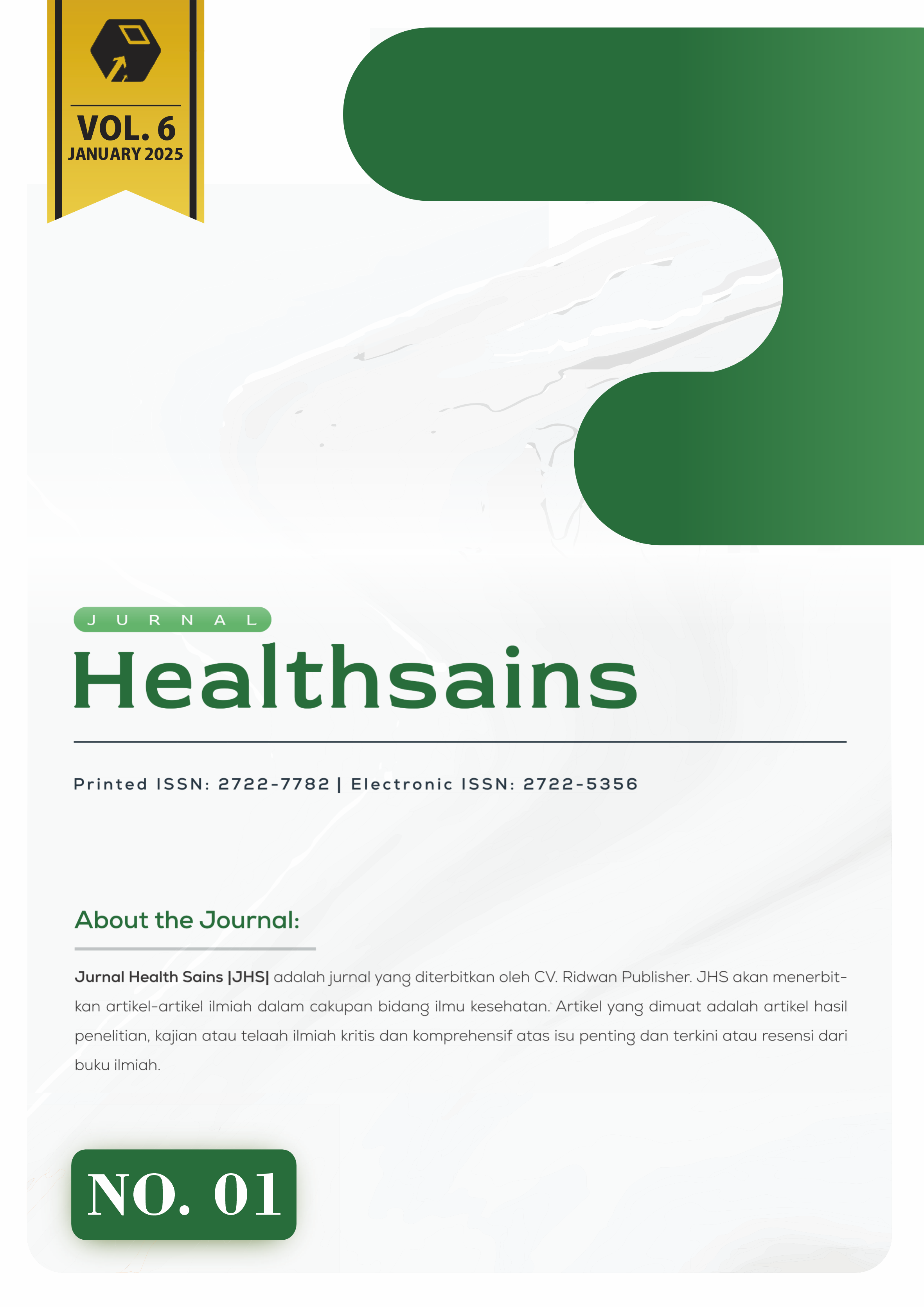The Effect of Platelet Aditive Solution In Maintaining the Quality and Function of Concentrated Platelets In The Pooling Method of Buffy Coat Leukofiltered
DOI:
https://doi.org/10.46799/jhs.v6i1.1537Keywords:
platelet additive solution, quality, concentrated platelets, buffy coat leukofilteredAbstract
The availability of platelets in the Indonesian Red Cross (PMI) Blood Transfusion Unit (UDD) has been significantly high, with 767,680 bags collected in 2019, increasing to 957,397 bags in 2021. The dengue fever outbreak alongside the COVID-19 pandemic led to a nearly twofold increase in the demand for concentrated platelets (TP) in hospitals from 2021. However, platelet additive solution (PAS), which can extend platelet shelf life, is not yet utilized in Indonesia. This study aims to investigate whether TP obtained using the buffy coat leukofiltered pooling method and stored with PAS can improve platelet quality during storage. A series of laboratory tests were conducted to evaluate platelet count, pH levels, and aggregation function using ADP inspection, monitored over a storage period from day zero to day seven. The results indicate that the addition of PAS effectively maintains platelet quality, pH stability, and platelet function throughout the storage duration. This is attributed to the nutrient-rich composition of PAS, which contains glucose, sodium acetate, sodium chloride, phosphate, magnesium, and potassium, ensuring the preservation of platelet integrity. The findings highlight the potential benefits of PAS implementation in Indonesia to enhance platelet storage efficiency and availability, particularly during periods of high demand. Future research should explore the optimal PAS formulation for different storage conditions, cost-effectiveness, and clinical efficacy in transfusion settings to support broader adoption of this technology in blood banking.
References
Adzhar Sumaiyah, 2018, Comparison of reactivity of ABO Antibody Titer and Other Parameters
of Aferesis Platelets in PAS and Non PAS Solution, KualaLumpur.
Berger, K., Schopohl, D., Wittmann, G., Schramm, W., Ostermann, H., and Rieger, C. 2016,
Blood Product Supply in Germany The Impact of Aferesis and Pooled Platelet Concentrates, Transfusion Medicine and Hemotherapy.
Bianchi, M., Vaglio, S., Pupella, S., Marano, G., Facco, G., Liumbruno, G. M., and Grazzini, G.
, Leucoreduction of Blood Components an Effective Way to Increase Blood Safety, Blood Transfusion.
Ministry of Health of the Republic of Indonesia. 2015, Regulation of the Minister of Health of
the Republic of Indonesia Number 91 of 2015 concerning Blood Transfusion Service Standards, Ministry of Health of the Republic of Indonesia, Jakarta.
Ministry of Health of the Republic of Indonesia. 2018, Indonesian Blood Service, Data and
Information Center of the Ministry of Health, Jakarta.
Dewi, S. A. P. S. A. 2016, Increase in Platelet Count after Administration of Apheretic Platelet
Transfusion in Children with Malignant Diseases accompanied by Refractory Thrombocytopenia, Thesis, Postgraduate in Biomedical Sciences Udayana, Denpasar.
European Directorate for the Quality of Medicines, E. D. f. t. Q. o. M. 2017, Guide to The
Preparation, Use and Quality Assurance of Blood Components : Recommendation, 19th edition, Starsbourg, France.
Gehrie, E. A., Frank, S. M., Visagie, M., Grabowski, M. K., Tobian, A. A., Strockbine, V. L.,
Demario, V. M., Lawrence, C. E., Hambley, B. C. and Uglik, K. 2019, One‐unit Compared to Two‐unit Platelet Transfusions for Adult Oncology Outpatients, Vox sanguinis, 114(1) : 517-522.
Harmening, D. M. 2018, Modern Blood Banking and Transfusion Practices, FA Davis,
Philadelphia, United States.
Hoffbrand, A. V., and Steensma, D. P. 2019, Hoffbrand's Essential Haematology, New York,
John Wiley and Sons.
Downloads
Published
Issue
Section
License
Copyright (c) 2025 Idah Wido Sari Nawangsih, Sri Widia A. Jusman, Saptuti Chunaeni

This work is licensed under a Creative Commons Attribution-ShareAlike 4.0 International License.
Authors who publish with this journal agree to the following terms:
- Authors retain copyright and grant the journal right of first publication with the work simultaneously licensed under aCreative Commons Attribution-ShareAlike 4.0 International (CC-BY-SA). that allows others to share the work with an acknowledgement of the work's authorship and initial publication in this journal.
- Authors are able to enter into separate, additional contractual arrangements for the non-exclusive distribution of the journal's published version of the work (e.g., post it to an institutional repository or publish it in a book), with an acknowledgement of its initial publication in this journal.
- Authors are permitted and encouraged to post their work online (e.g., in institutional repositories or on their website) prior to and during the submission process, as it can lead to productive exchanges, as well as earlier and greater citation of published work.






